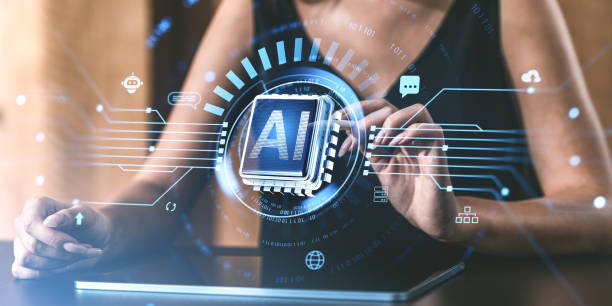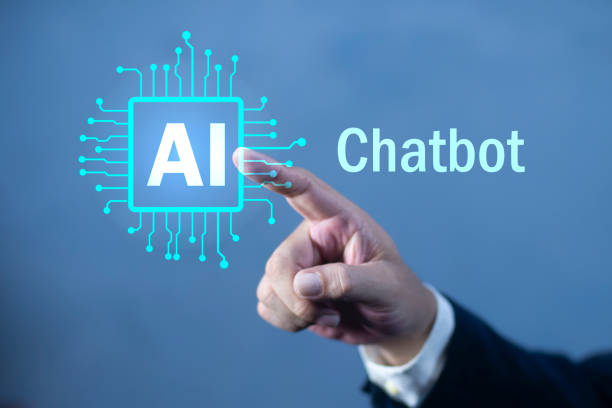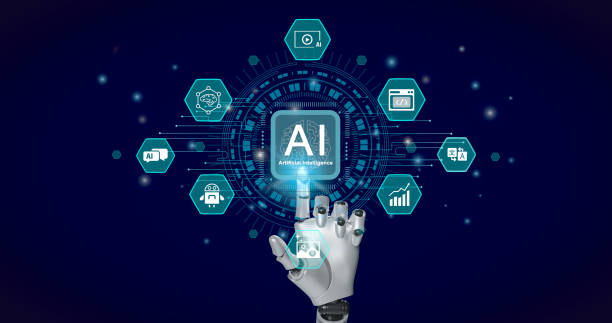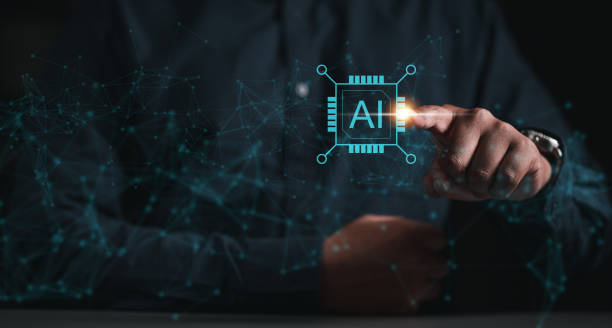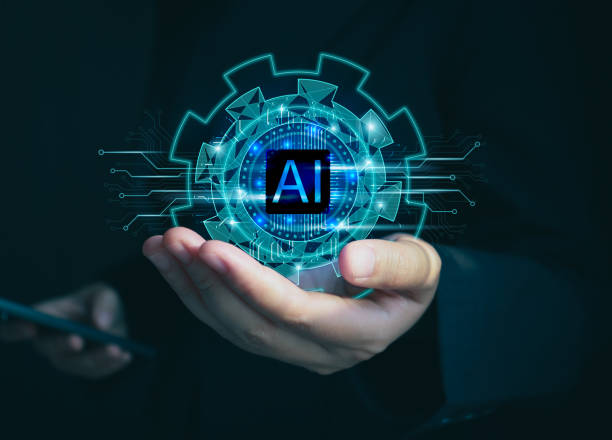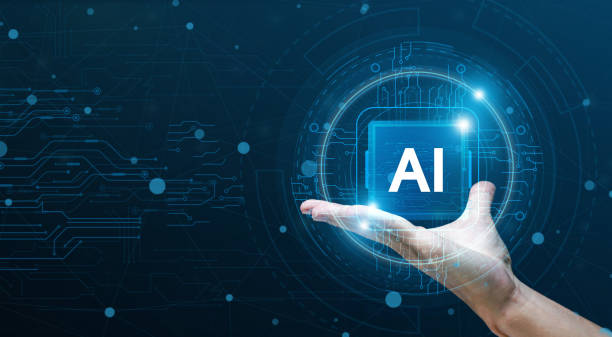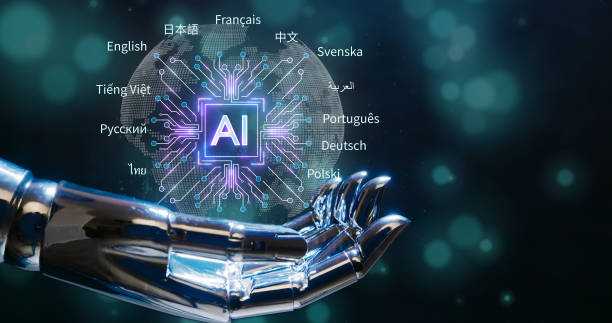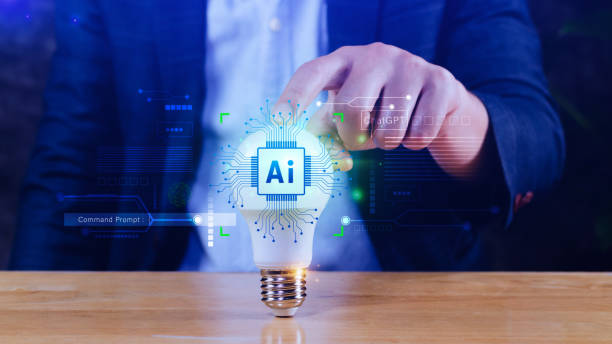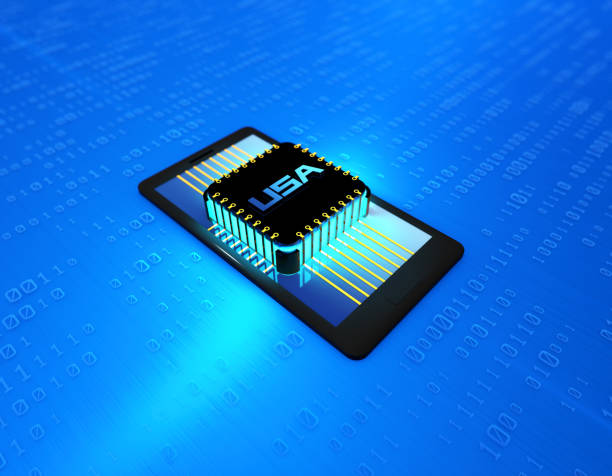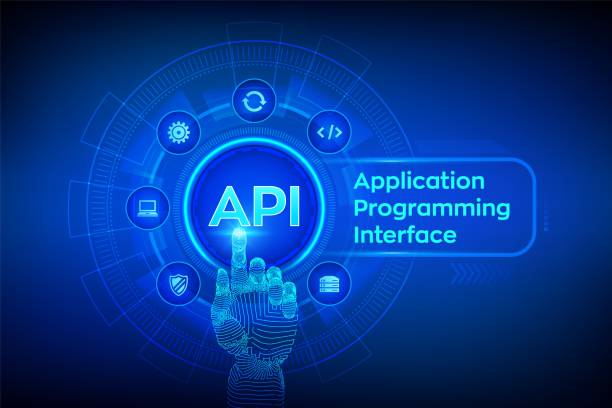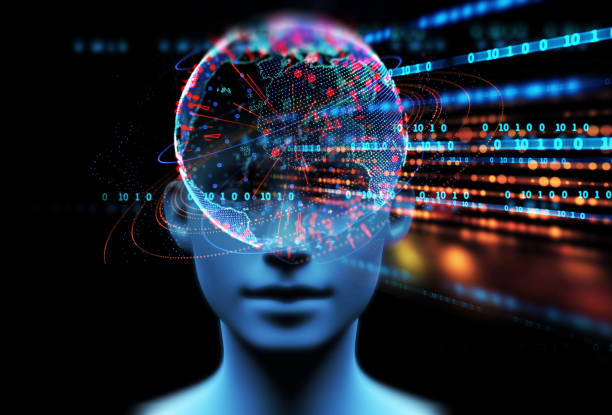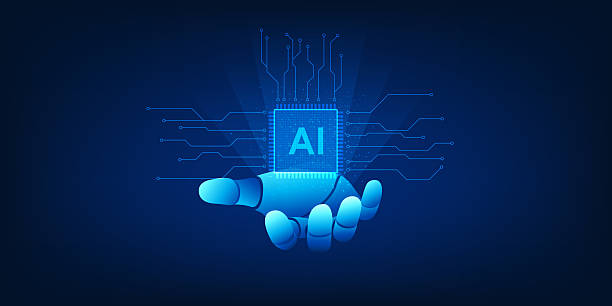What is an Artificial Intelligence Robot and how does it differ from other robots?
#Artificial Intelligence Robot is an intelligent machine that, using machine learning and artificial intelligence algorithms, is capable of performing tasks that usually require human intelligence.
These robots can analyze data, identify patterns, make decisions, and even learn.
Their main difference from ordinary robots is in the level of intelligence and the ability to adapt to different conditions.
While ordinary robots operate based on pre-programmed instructions, AI robots can operate independently and adapt to environmental changes.
For example, an Artificial Intelligence robot in a factory can predict patterns of device failure and warn before an accident occurs, while a regular robot can only perform repetitive tasks.
Also, Robotics technology has made significant progress in recent years.
The application of these robots is expanding in various industries, including manufacturing, services, medicine, and education. An AI robot with the ability to learn and adapt will create a bright future in the field of technology and industry.
Are you bothered by losing customers who have visited your site to make a purchase?
Rasaweb is your specialized solution for having a successful online store.
✅ Significant increase in your online sales
✅ Creating trust and professional branding with customers⚡ Get free consultation from Rasaweb experts!
Main Components of an Artificial Intelligence Robot
An artificial intelligence robot consists of several main components, each of which plays an important role in its overall performance.
These components include:
- Sensors These tools are used to collect data from the surrounding environment.
Sensors can receive information such as temperature, light, sound, image, and location. - Processor This section is responsible for processing the data collected by the sensors.
The processor uses artificial intelligence algorithms to analyze the information and make the necessary decisions. - Actuators These components are used to execute the processor’s commands.
Actuators can include motors, pumps, arms, and other mechanical parts that control the robot’s movement and function. - Artificial Intelligence Software This section includes machine learning algorithms, neural networks, and other artificial intelligence techniques that allow the robot to learn, decide, and adapt to different conditions.
- Power Source This part provides the energy needed for the operation of all the robot’s components.
The power source can include batteries, solar panels, or connection to mains electricity.
The combination and coordination of these components enables the artificial intelligence robot to perform complex tasks and operate effectively in various environments.
By utilizing these components, the artificial intelligence robot is capable of performing tasks that were previously only possible by humans.
Amazing Applications of Artificial Intelligence Robots in Various Industries
Artificial intelligence robots, due to their unique capabilities, have extensive applications in various industries.
In the manufacturing industry, these robots are used to perform repetitive and dangerous tasks, which increases productivity and reduces the risk of injury.
In the field of medicine, artificial intelligence robots assist surgeons in performing complex operations, increasing accuracy and speed.
Also, in the customer service sector, chatbots and virtual assistants, using artificial intelligence, answer customer questions and provide support services 24 hours a day.
In the transportation industry, self-driving cars, using artificial intelligence robots, increase safety and efficiency and help reduce traffic and air pollution.
Also, in the agricultural sector, artificial intelligence robots can help farmers manage farms, intelligently irrigate, and detect plant diseases.
These applications show that artificial intelligence robots play an important role in improving the quality of life and increasing efficiency in various industries.
Currently, you can visit the IEEE website for further reading.
| Industry | Applications |
|---|---|
| Manufacturing | Performing repetitive tasks, quality control |
| Medicine | Surgery, disease diagnosis |
| Customer Service | 24-hour support, answering questions |
| Transportation | Self-driving cars, traffic management |
| Agriculture | Farm management, intelligent irrigation |
Challenges and Limitations of Using Artificial Intelligence Robots
Despite the many advantages, the use of artificial intelligence robots also comes with challenges and limitations.
One of the most important challenges is the high cost of developing and implementing these robots.
Creating and training an artificial intelligence model requires a lot of financial and human resources.
Also, artificial intelligence robots may have problems in unexpected and complex situations and may not be able to make correct decisions.
Cybersecurity is also another important challenge, as artificial intelligence robots can be targeted by cyberattacks and put sensitive information at risk.
In addition, the widespread use of artificial intelligence robots can lead to job losses and increased social inequalities.
Therefore, before implementing artificial intelligence robots, sufficient attention should be paid to these challenges and limitations, and appropriate solutions should be considered to deal with them.
It should be noted that an AI robot is a complex technology and requires careful planning.
Are you dissatisfied with the low sales of your online store?
Rasaweb is your solution for having a professional and high-selling online store.
✅ Significant increase in sales and income
✅ Easy and enjoyable shopping experience for customers
⚡ Get free advice from Rasaweb right now!
The Future of Artificial Intelligence Robots and its Impact on Our Lives
The future of artificial intelligence robots is very bright and full of transformation.
Continuous advances in machine learning and artificial intelligence have made these robots more intelligent and efficient day by day.
It is predicted that in the near future, artificial intelligence robots will play a much more important role in our lives.
They can help us perform daily tasks, from caring for the elderly to performing administrative and financial affairs.
In industry, artificial intelligence robots can fully automate production lines and improve product quality.
In the field of health, they can help doctors diagnose diseases and provide personalized treatments.
Also, artificial intelligence robots can play an important role in education and help students learn complex concepts.
However, it should be noted that the widespread use of artificial intelligence robots requires the development of appropriate laws and regulations to prevent abuse and the creation of social problems.
With its countless capabilities, an artificial intelligence robot can improve our lives and create a better future.
Click here to preview your posts with PRO themes ››
Types of Artificial Intelligence Robots and Their Special Applications
Artificial intelligence robots are designed and built in various types, each with its own special applications.
One of the common types is industrial robots, which are used to perform repetitive and heavy tasks in production lines.
These robots usually have strong and precise mechanical arms that can move, assemble, and package parts.
Another type of artificial intelligence robot is service robots, which are designed to provide services to humans.
These robots can be used in hotels, hospitals, restaurants, and other public places.
Service robots usually have capabilities such as face recognition, voice recognition, and automatic navigation.
Also, military robots are among the important types of artificial intelligence robots that are used to perform dangerous and complex tasks on the battlefield.
These robots can perform reconnaissance operations, bomb disposal, and even direct warfare.
Finally, educational robots are also designed to help students learn different concepts.
These robots can interact with students, answer their questions, and provide interactive exercises.
With its diversity, an AI robot is transforming various industries.
How to Train an Artificial Intelligence Robot?
Training an artificial intelligence robot is a complex and multi-stage process that requires expertise and sufficient knowledge in the field of artificial intelligence and machine learning.
The first step in this process is to collect training data.
This data can include images, sounds, texts, or any other type of information that the robot needs to learn.
After collecting the data, it must be pre-processed and prepared.
This includes removing invalid data, converting data to the appropriate format, and labeling the data.
Then, a suitable machine learning model is selected for the robot.
This model can be a neural network, a decision tree, or any other type of algorithm that is suitable for the task at hand.
The selected model is trained using the training data.
In this step, the parameters of the model are adjusted in such a way that it can recognize the patterns in the data.
After training the model, its performance must be evaluated and improved if necessary.
This includes testing the model using new data and comparing the results with the expected results.
Finally, the trained model is implemented on the robot and the robot can use it to perform its tasks. With proper training, an artificial intelligence robot can become a powerful tool.
| Stage | Description |
|---|---|
| Data Collection | Collecting training data |
| Data Preprocessing | Preparing the data for training |
| Model Selection | Selecting a machine learning algorithm |
| Model Training | Adjusting model parameters |
| Performance Evaluation | Testing and improving the model |
| Implementation | Implementing the model on the robot |
Click here to preview your posts with PRO themes ››
Ethical Issues Related to Artificial Intelligence Robots
The development and use of artificial intelligence robots raises important ethical issues that require careful attention and review.
One of these issues is accountability.
If an artificial intelligence robot makes a wrong decision and causes damage, who will be responsible? Is it the robot’s manufacturer, the programmer, or the user? Another issue is privacy.
Artificial intelligence robots can collect a lot of information about users and use it for various purposes.
How can we prevent the misuse of this information? Also, the issue of discrimination is also an important issue.
If an artificial intelligence robot is trained based on biased data, it may make discriminatory decisions and harm some people.
In addition, the issue of job losses is also one of the ethical issues related to artificial intelligence robots.
If robots can perform many tasks better and cheaper than humans, what will happen to the human workforce? Therefore, before the widespread development and use of artificial intelligence robots, sufficient attention should be paid to these ethical issues and appropriate solutions should be considered to solve them.
An AI robot must be developed in accordance with ethical principles.
Does your current website create the trust that potential customers should have in your business? If the answer is no, it’s time to have a professional and effective corporate website with Rasaweb.
✅ Completely custom design to match your brand identity
✅ Increase lead attraction and credibility of your business in the eyes of customers⚡ Contact us for a free consultation!
Comparing Artificial Intelligence Robots with Humans: Advantages and Disadvantages
Comparing artificial intelligence robots with humans shows that each has its own advantages and disadvantages.
Artificial intelligence robots can perform repetitive and heavy tasks faster and more accurately than humans.
They can also be used in dangerous and intolerable conditions for humans.
On the other hand, humans have higher creativity, empathy, and decision-making power than robots.
They can make correct decisions in complex and unexpected situations and communicate with others.
Artificial intelligence robots cannot yet fully mimic these skills.
Also, artificial intelligence robots require careful training and programming and cannot learn independently and adapt to environmental changes.
Humans can constantly learn and adapt to new conditions.
However, continuous advances in artificial intelligence have made robots more intelligent and efficient day by day and have overcome some of their limitations.
AI robots and humans each play an important role in society and can help advance and develop societies by working together.
The difference between humans and robots is significant, but both complement each other.
How to Build an Artificial Intelligence Robot? (Basic)
Building an artificial intelligence robot, even in a basic way, requires multiple skills and knowledge, but you can start with simple steps.
First, you need to choose a suitable hardware platform.
This can be a Raspberry Pi, Arduino, or any other microcontroller that can connect to sensors and actuators.
Then you need to choose the sensors and actuators needed for the robot.
These sensors can include cameras, microphones, temperature sensors, light sensors, and proximity sensors.
Actuators can also include motors, arms, and other mechanical parts that control the robot’s movement and function.
After selecting the hardware, you need to install the software needed to control the robot.
This can be a Linux operating system, an IDE such as Arduino IDE, or any other software that provides the ability to program the robot.
Then you need to choose a suitable programming language for the robot.
Python, C++, and Java are among the common languages for programming robots.
After selecting the programming language, you need to write the code needed to control the robot.
This includes code to read data from sensors, process data, and send commands to actuators.
Finally, you need to upload the code to the robot and test it.
This process requires patience, but with practice and experience, you can build a simple artificial intelligence robot.
An AI robot can be built with knowledge and skill.
Click here to preview your posts with PRO themes ››
FAQ
| Row | Question | Answer |
|---|---|---|
| 1 | What is an artificial intelligence robot? | An artificial intelligence robot is a machine capable of understanding, reasoning, learning and problem-solving, and can perform complex tasks with relative autonomy. |
| 2 | What are the most important applications of artificial intelligence robots? | Main applications include industrial manufacturing, customer service (chatbots), medicine and surgery, autonomous transportation, space exploration, and military affairs. |
| 3 | What is the main difference between an artificial intelligence robot and a regular robot? | A regular robot only follows programmed instructions, while an artificial intelligence robot can learn from data, make decisions, and adapt to new environments. |
| 4 | How do artificial intelligence robots learn? | They identify patterns and improve their performance through machine learning algorithms (such as deep learning, reinforcement learning) and processing huge amounts of data. |
| 5 | Can artificial intelligence robots have feelings? | Currently, artificial intelligence robots do not have real human feelings. They can mimic or recognize emotions, but do not understand and experience them. |
| 6 | What are the current limitations of artificial intelligence robots? | Limitations include the need for a lot of data, inability to understand abstract concepts, lack of real creativity, ethical issues, and challenges of generalizability in new environments. |
| 7 | What is the role of artificial intelligence in the development of humanoid robots? | Artificial intelligence helps humanoid robots walk, maintain balance, understand their surroundings, interact with humans, and perform complex tasks. |
| 8 | How is the future of artificial intelligence robots predicted? | It is predicted that artificial intelligence robots will become smarter, more autonomous, and capable of performing more complex tasks in everyday life and industry, and their interaction with humans will increase. |
| 9 | Can artificial intelligence robots replace all human jobs? | It is unlikely that all human jobs will be replaced. Robots take over many repetitive and dangerous tasks, but jobs that require creativity, empathy and moral judgment will remain. |
| 10 | What ethical and social challenges are raised with the expansion of artificial intelligence robots? | Challenges include issues related to privacy, data security, ethical decision-making by robots, impact on employment, and accountability in case of errors. |
And other services of Rasa Web advertising agency in the field of advertising
Smart Link Building: A creative platform to improve customer acquisition by optimizing key pages.
Smart Digital Advertising: A new service to increase digital branding through Google Ads management.
Smart Brand Identity: Professional optimization to analyze customer behavior using a SEO-oriented content strategy.
Smart Brand Identity: Designed for businesses looking to improve SEO rankings through precise audience targeting.
Smart Direct Marketing: Designed for businesses looking to analyze customer behavior through an SEO-oriented content strategy.
And more than a hundred other services in the field of internet advertising, advertising consulting and organizational solutions
Internet Advertising | Advertising Strategy | Reportage Ads
Resources
Applications of smart robots in everyday life
,Robotics and Artificial Intelligence; History and Future
,What is Artificial Intelligence and what are its applications?
,What is Artificial Intelligence? Applications of Artificial Intelligence
? In Rasa Web digital marketing agency Afarin, we help your business shine in today’s competitive world and achieve its goals. From multilingual website design to search engine optimization and social media management, we are with you to have a powerful presence online.
📍 Tehran, Mirdamad Street, next to the Central Bank, South Kazerun Alley, Ramin Alley No. 6

